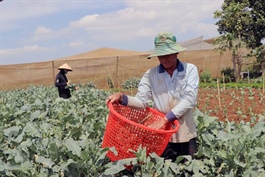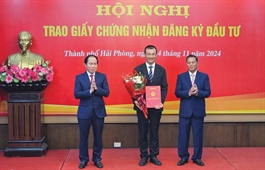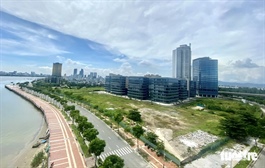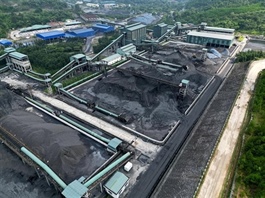New law marks shift for electricity market
New law marks shift for electricity market
Last year the National Assembly issued the new Law on Electricity, which took effect from February 1. Pham Hoang Vu, associate and deputy head of project and infrastructure, and Pham Dac Hoang, junior associate of Indochine Counsel, outline key highlights of the law that could potentially transform Vietnam’s energy sector.
To safeguard national energy security, the state retains a monopoly over critical electricity activities, including dispatching the national power system and investing in and operating key projects such as nuclear plants, multipurpose strategic hydropower plants, and strategic transmission grids with a voltage of 220kV or higher.
At the same time, the Law on Electricity (LoE) introduces policies to encourage private sector participation in Vietnam’s power infrastructure. Private entities can invest in the construction of power projects and develop sources and grids, provided they align with the Power Development plan VIII (PDP8), local grid plans, and other regulations regarding electricity generation, distribution, wholesale, and retail. Private entities may also operate independently built power grids in compliance with applicable laws.
National planning is classified as national sectoral and industry planning. Provincial power plans include the development of local supply networks but exclude sources with minimal or no impact on the national system, off-grid power sources except for export and import electricity, low-voltage grids, and renovation projects that do not increase capacity, voltage levels, or land use.

Pham Hoang Vu, associate and deputy head of project and infrastructure (left), and Pham Dac Hoang, junior associate of Indochine Counsel |
Licensing and approval
Apart from emergency power projects and those specified under the law, any investment policy approvals (IPA) or decisions for electricity schemes must comply with the relevant provisions of the Law on Public Investment, the Law on Public-Private Partnership Investment, and the Law on Investment.
For power grid investment projects with a voltage of 220kV or less spanning two or more provincial-level administrative units, excluding emergency grid initiatives, the IPA will be issued by the provincial people’s committee where the transmission line originates. This determination will be based on the project’s name as specified in the PDP8 or the provincial power supply network development plan.
For low- and medium-voltage power grid projects requiring IPA from provincial-level people’s committees, approvals will be granted in alignment with local development plans and proposals submitted by investors. Progress milestones for projects must also be clearly outlined in the investment registration certificate or the IPA.
Certain power schemes will not be subject to land use rights auctions or bidding mechanisms, including those under the state’s monopoly, hydropower expansion projects, and grid renovation or upgrades where the existing owners are approved as investors.
Other exceptions include projects approved by state agencies based on proposals from state-owned enterprises, emergency power ventures, offshore wind (OSW) projects, and cases prescribed under the Law on Investment and the Land Law. If land use rights auctions are required, they must comply with the Land Law’s provisions.
For power projects with two or more interested investors, except those covered under specific investor selection rules and OSW initiatives, a bidding mechanism will apply. Bids will be evaluated based on electricity price, with the winning bid setting the maximum price for negotiating power purchase agreements (PPAs). This mechanism does not apply to projects without a price bracket or those using the direct PPA mechanism, as regulated in July 2024.
The LoE defines the key components of PPAs, wholesale contracts, and power service supply agreements. For foreign-invested projects, agreements may be drafted in bilingual formats, Vietnamese and English.
The law also restates the direct models, including physical ones, where electricity is purchased via private connected grids, and synthetic ones, where it is purchased through the national grid. The development of such mechanisms must comply with legal frameworks and align with the competitive market’s maturity.
PPA electricity prices include a fixed price averaged over the project’s economic life, operational and maintenance costs, and variable components. Prices remain fixed for the contract term, though temporary pricing is allowed until an official price is agreed upon.
For small renewable energy schemes, electricity prices will be subject to the avoidable cost tariff mechanism, with capacity scales regulated by the Ministry of Industry and Trade (MoIT) from time to time.
Electricity buyers and sellers may agree on contract prices based on principles that ensure recovery of investment costs, operational costs for production, and a reasonable profit margin. This applies to small renewable energy power plants after the expiration of the avoided cost tariff period, power plants that have completed their electricity purchase contract pricing period, and build-operate-transfer projects transferred to the government as stipulated under the LoE.
Renewable energy development
The LoE provides key principles and incentives for renewable and clean energy development. Projects must align with national power system safety, reasonable costs, grid development, and emissions reduction targets.
Supportive policies, including preferential mechanisms, will be applied to various renewable power sources such as small hydropower initiatives. These mechanisms will be established in accordance with legal regulations and tailored to socioeconomic development requirements over specific periods. Ventures participating in the competitive electricity market are encouraged.
Renewable projects integrating battery energy storage systems or producing green hydrogen and green ammonia for electricity generation will be promoted. Installed capacities of solar and wind undertakings combined with such systems must align with national or provincial power development plans.
Special incentives for new energy and OSW projects include exemptions or reductions in sea area fees, land use fees, and land rent. Provisions will also be made for long-term minimum contracted quantity for on-grid projects, with further details to be issued by the government.
OSW power ventures include all wind turbines built in Vietnamese waters, beyond the average multi-year low sea level line of the mainland. Nearshore wind projects refer to turbines located within six nautical miles from this line, while OSW ones refer to turbines located beyond this distance.
The planning and investment of these will follow a priority order. Projects supplying electricity to the national power system will take precedence, followed by self-produced and self-consumption ones, including green hydrogen and green ammonia production for domestic use. Those aimed at exporting electricity or green hydrogen and green ammonia will be considered last.
Surveys for OSW will be conducted by state-owned entities designated by the prime minister or other eligible entities per government regulations. The appraisal of the IPA for wind projects requires input from multiple ministries and local authorities where the undertaking is located.
Investor selection for OSW projects will primarily be through competitive bidding based on electricity prices, which are capped by the MoIT’s maximum price bracket. The winning bid will set the ceiling for negotiating PPAs. Additionally, the bidding dossier must include the draft PPA and details of incentives under the LoE.
The LoE marks a significant shift in pricing, transitioning towards a market-based mechanism with state price regulation. It aligns with the development of a competitive electricity market, covering trading through long-term contracts and call option contracts for both buyers and sellers. The law also aims to reduce and eventually eliminate cross-subsidies between customer groups, regions, and areas in line with market liberalisation.
Furthermore, the LoE accelerates related venture development and ensures a stable power supply, addressing the anticipated rise in demand. It also provides a legal foundation for state authorities to guide ministries in developing implementation documents.






















